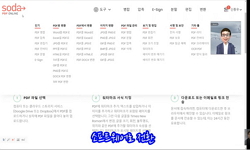본고에서는 "힌디로 흐름을 말하는 방법을 익히는 과정의 단계"를 훈련시키기 위해서 자신의 일상생활의 행위들을 힌디 의미 단위로 계속 이어 말하는 형태의 훈련을 시키는 방법을 목적으...
http://chineseinput.net/에서 pinyin(병음)방식으로 중국어를 변환할 수 있습니다.
변환된 중국어를 복사하여 사용하시면 됩니다.
- 中文 을 입력하시려면 zhongwen을 입력하시고 space를누르시면됩니다.
- 北京 을 입력하시려면 beijing을 입력하시고 space를 누르시면 됩니다.

힌디어로 "말하기" 구사를 위한 방법 연구 1 = A Study on Developing Fluency in Hindi Speaking 1 : Focussed on Semantic unit of Expressions and Actions in Daily Life
한글로보기https://www.riss.kr/link?id=A99767202
- 저자
- 발행기관
- 학술지명
- 권호사항
-
발행연도
2010
-
작성언어
Korean
-
주제어
내용추출 ; 변환 ; 흐름구사 ; 의미단위 ; 행동표현 ; 생각의 틀 ; Sampling of contents ; Transformation ; Commanding ; Unit of sematic ; Action expression ; Frame of thinking
-
등재정보
KCI등재
-
자료형태
학술저널
-
수록면
27-50(24쪽)
-
KCI 피인용횟수
1
- DOI식별코드
- 제공처
-
0
상세조회 -
0
다운로드
부가정보
국문 초록 (Abstract)
본고에서는 "힌디로 흐름을 말하는 방법을 익히는 과정의 단계"를 훈련시키기 위해서 자신의 일상생활의 행위들을 힌디 의미 단위로 계속 이어 말하는 형태의 훈련을 시키는 방법을 목적으로 하되 그것의 연습 과정을 정하여 수행하도록 시도하여 보았다. 초보자들의 경우 이 단계에서는 정해진 규칙에 따라서 진행할 수 있도록 일종의 틀 을 만들어서 그 틀 에 따라 어느 정도 표준화된 형식으로 이러한 행위를 표현하는 의미 단위 형태로서 동작을 나타내는 동사를 사용하고 훈련 과정을 수행하도록 연습시킨다. 첫 번째 단계로서 동사와 1인칭, 현재시제로 제한하여 그 범위를 정하였다. 여기에서 1인칭으로 범위를 제한한 까닭은 자기 자신의 일을 본인이 가장 잘 이해하고 표현할 수 있기 때문이다. 본 연구에서 위의 제한된 범위만을 중심으로 표현하는 방법을 연구하기 위하여 부제로 표기된 "의미 단위 표현을 중심으로" 하는 표현 방법을 채택하였음을 밝힌다.
다국어 초록 (Multilingual Abstract)
This article presents a study on developing impressive speaking skills in a non-native language (Or a laungage other than mother language). In this study Hindi Languge has been focused. In fact, when we talk about fluency in any langauge, one obser...
This article presents a study on developing impressive speaking skills in a non-native language (Or a laungage other than mother language). In this study Hindi Languge has been focused.
In fact, when we talk about fluency in any langauge, one observes that how clearly/easily can you express different actions and deeds in that language at present. Flow is the most important thing in speaking. If a conversation lose consistancy, it can never convey the real message. The importance of flow has been emphasized in this article. There are two kinds of flow: Flow of language itself and other is flow of conversation on particular time. First one depends on the speaker’s knowledge about language’s grammar and vocabulary while later one depends on the speaker’s knowledge about that subject and given title of conversation. Flow of language is basic requirement for a non-native speaker while the flow in converstaion can be developed later.
Here, we present a different method for developing fluency in a non-native language by making a pre study curriculum on certain actions on daily life. Presuming the condition that a speaker has a knowledge about certain situations, how his thinking process works while expressing a scenario in Hindi. The speed of thinking and speaking must be the same to convey proper information. In real, the two acts (Thinking and speaking) have a time difference usually. If the lagging time between the two acts is much more than threshold limits, flow gets crashed instantly. In the lack of this flow, conversation loses its consistancy too.
If someone really wants to speak a non-native lanuage in a natural manner, flow should be maintained naturally. It’s very difficult to acheive the fluency level without maintaining the flow. In order to aquire a consistent flow, speeds of the frames of speaking and thinking must be synchronized. The level of synchronization and balance gets better with time. Obviously, it takes a lot of efforts and massive amount of practice and exercise to acheive a satisfactory level of speaking a non-native language. But after a certain period it grows very fast and learners grab complete command on language.
참고문헌 (Reference)
1 신성철, "커뮤니케이션이론과 외국어교육" 충남대학교 언어연구소 (5) : 1981
2 정정섭, "외국어교육" 학문사 1969
3 이맹성, "외국어과교육" 한국능력개발사 1975
4 문용, "심리학적 배경 <영어교수법>" 신웅사 1984
5 Karz, Jerrord J., "The Structure of a Semantic Theory" 39 : 170-210, 1963
6 Pyles, Thomas, "The Origin and Development of the English Languaes" Harcourt Brace Jovanorich, Inc. 1971
7 Chomsky, Noam, "Syntactic Structure" The Hague Mouton 1957
8 Allen, W. S., "Living English Speech" Longmans 1954
9 Stern, H. H., "Foreign Languages in Primary Education" Oxford Univ. Press 1963
10 전상범, "FLES에 관한 몇가지 문제들" 23 : 1981
1 신성철, "커뮤니케이션이론과 외국어교육" 충남대학교 언어연구소 (5) : 1981
2 정정섭, "외국어교육" 학문사 1969
3 이맹성, "외국어과교육" 한국능력개발사 1975
4 문용, "심리학적 배경 <영어교수법>" 신웅사 1984
5 Karz, Jerrord J., "The Structure of a Semantic Theory" 39 : 170-210, 1963
6 Pyles, Thomas, "The Origin and Development of the English Languaes" Harcourt Brace Jovanorich, Inc. 1971
7 Chomsky, Noam, "Syntactic Structure" The Hague Mouton 1957
8 Allen, W. S., "Living English Speech" Longmans 1954
9 Stern, H. H., "Foreign Languages in Primary Education" Oxford Univ. Press 1963
10 전상범, "FLES에 관한 몇가지 문제들" 23 : 1981
11 Ausubel, David, "Adults vs. Children in Second Languages Learning Phychological Considerations" 48 : 1964
12 전상범, "Adults vs. Children FL Learning: Psychological Conditions" 서울대학교 1981
13 Chomsky, Noam, "A Transformational Approachto Syntax" The Univ. of Texas 1962
동일학술지(권/호) 다른 논문
-
- 한국외국어대학교 인도연구소
- 이명무(Lee, Myung-Moo)
- 2010
- KCI등재
-
- 한국외국어대학교 인도연구소
- 임근동(Lim, Geun-Dong)
- 2010
- KCI등재
-
- 한국외국어대학교 인도연구소
- 황순일(Hwang, Soon-Il)
- 2010
- KCI등재
-
Stylistic Analysis of a South Asian Text
- 한국외국어대학교 인도연구소
- Ravinder Gargesh
- 2010
- KCI등재
분석정보
인용정보 인용지수 설명보기
학술지 이력
| 연월일 | 이력구분 | 이력상세 | 등재구분 |
|---|---|---|---|
| 2028 | 평가예정 | 재인증평가 신청대상 (재인증) | |
| 2022-01-01 | 평가 | 등재학술지 유지 (재인증) |  |
| 2019-01-01 | 평가 | 등재학술지 유지 (계속평가) |  |
| 2016-05-13 | 학술지명변경 | 외국어명 : 미등록 -> Journal of South Asian Studies |  |
| 2016-01-01 | 평가 | 등재학술지 선정 (계속평가) |  |
| 2015-12-01 | 평가 | 등재후보로 하락 (기타) |  |
| 2012-12-31 | 학회명변경 | 한글명 : 남아시아연구소 -> 인도연구소영문명 : Institute of South Asian Studies -> Institute of Indian Studies |  |
| 2011-01-01 | 평가 | 등재 1차 FAIL (등재유지) |  |
| 2008-01-01 | 평가 | 등재학술지 선정 (등재후보2차) |  |
| 2007-01-01 | 평가 | 등재후보 1차 PASS (등재후보1차) |  |
| 2006-01-01 | 평가 | 등재후보학술지 유지 (등재후보1차) |  |
| 2004-01-01 | 평가 | 등재후보학술지 선정 (신규평가) |  |
학술지 인용정보
| 기준연도 | WOS-KCI 통합IF(2년) | KCIF(2년) | KCIF(3년) |
|---|---|---|---|
| 2016 | 0.32 | 0.32 | 0.22 |
| KCIF(4년) | KCIF(5년) | 중심성지수(3년) | 즉시성지수 |
| 0.2 | 0.17 | 0.843 | 0.19 |




 KCI
KCI DBpia
DBpia






